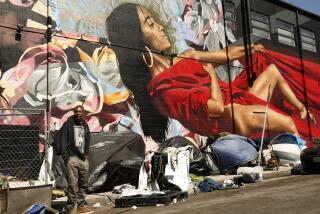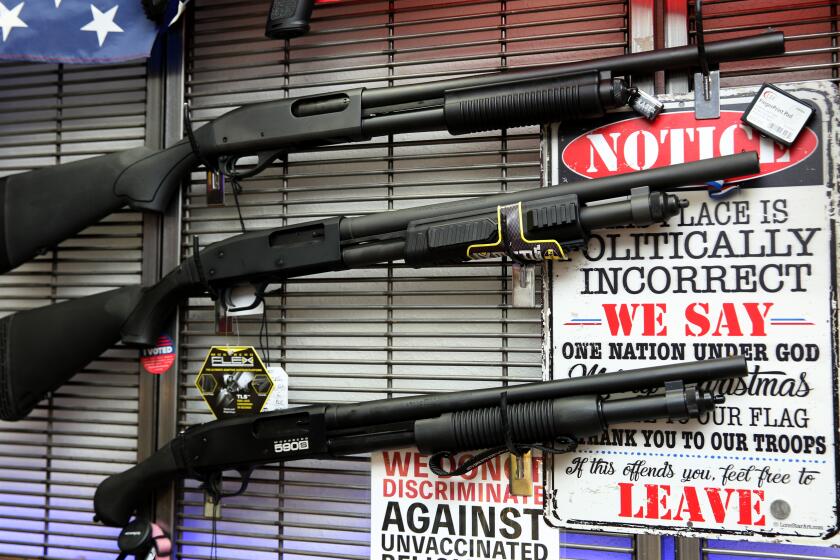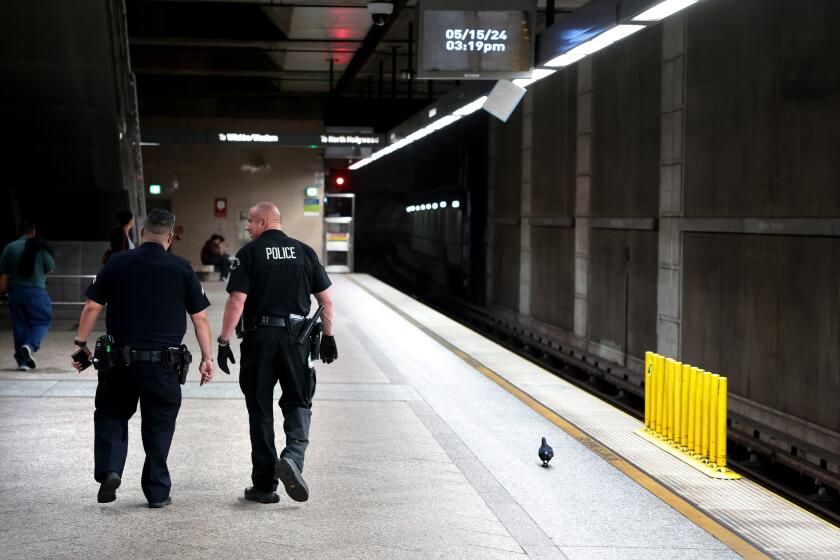Endorsement: Vote yes on Measure EE today to increase funding for public school students
There are lots of problems in L.A.’s public schools, and there are plenty of factors — societal, governmental and educational — that can be blamed. But one simple reality is this: The Los Angeles Unified School District is dramatically underfunded. When the cost of living is factored in, California ranks among the bottom 10 states in the country in per-pupil expenditures. Compared with cities such as New York and Boston, Los Angeles’ spending on its schools and students is shockingly low.
That’s why voters need to approve Measure EE, the 16-cent-per-square foot parcel tax on the ballot Tuesday.
The measure’s opponents have made some valid counter-arguments. They note that the district hasn’t always spent its money wisely — — remember the iPad debacle? — and that late-in-the-game word changes in the measure’s language caused some confusion about exactly what might be taxed.
But even if the measure isn’t perfect, it’s far better than seeing schools go without nurses, counselors, librarians and at least somewhat smaller class sizes. Tuesday’s vote offers a chance to address chronic underfunding that has been plaguing the schools for years. It’s an investment in kids who face too many obstacles in life. It’s also an opportunity to make Los Angeles attractive to businesses that might otherwise leave or choose not to locate here because their employees want strong, effective public schools.
The district has designed this tax measure to reduce the regressive qualities inherent in parcel taxes. Most of those taxes assess a set dollar amount on each parcel, whether it’s a small cottage or a multimillion-dollar mansion or a vast warehouse. The district’s square-footage formula, which would cost the owner of a 1,500-square-foot house $240 a year, eliminates much of that problem, though houses of the same size with very different market values would still pay the same. Senior citizens and the disabled would qualify for exemptions and the tax would sunset in 12 years. The measure would raise about $750 per student to add to the $16,000 that the district spends now per pupil.
The square-footage formula is unpopular with the business community because, with their large buildings, private sector businesses would end up paying most of the tax. No wonder business organizations have mounted a significant campaign against it.
If the voters approve the tax by the required two-thirds margin, that’s just the beginning of the work for L.A. Unified. It has a long way to go trimming future employee healthcare costs, streamlining administrative expenses and proving that it can be a wise and efficient custodian of this extra $500 million a year. If it flubs this, persuading voters to approve future taxes would be a hard sell and board members would deserve to lose their next elections. But this much is certain: Students and teachers can’t succeed without adequate funding.
Enter the Fray: First takes on the news of the minute »
Today is also Election Day for residents in the North San Fernando Valley, who will cast ballots in a special election to fill the Los Angeles City Council seat left open when Councilman Mitch Englander left to become a lobbyist with a sports and entertainment firm. There are 15 candidates running to represent the district, which includes the communities Northridge, Granada Hills, Porter Ranch, Chatsworth and West Hills.
The Times’ pick in the race is Loraine Lundquist, an astrophysicist and instructor at Cal State Northridge’s Institute for Sustainability. She’s an environmental activist who would keep climate change front-and-center in local decision making. She’s also a neighborhood council member who wants to build homeless and affordable housing — in a district that has, so far, been very slow to create the shelters and supportive housing needed to get people off the street.
Follow the Opinion section on Twitter @latimesopinion and Facebook
More to Read
A cure for the common opinion
Get thought-provoking perspectives with our weekly newsletter.
You may occasionally receive promotional content from the Los Angeles Times.






